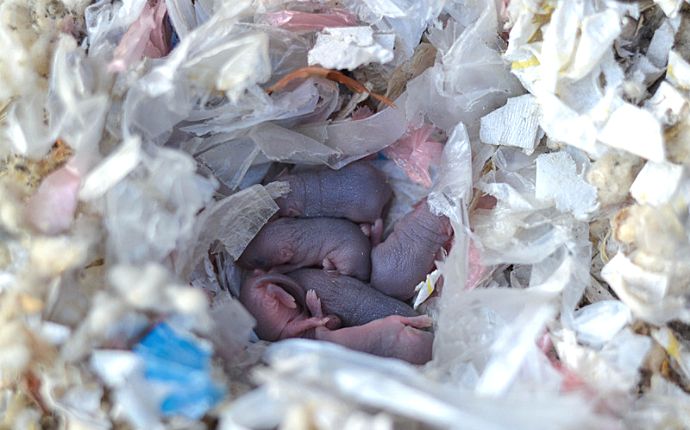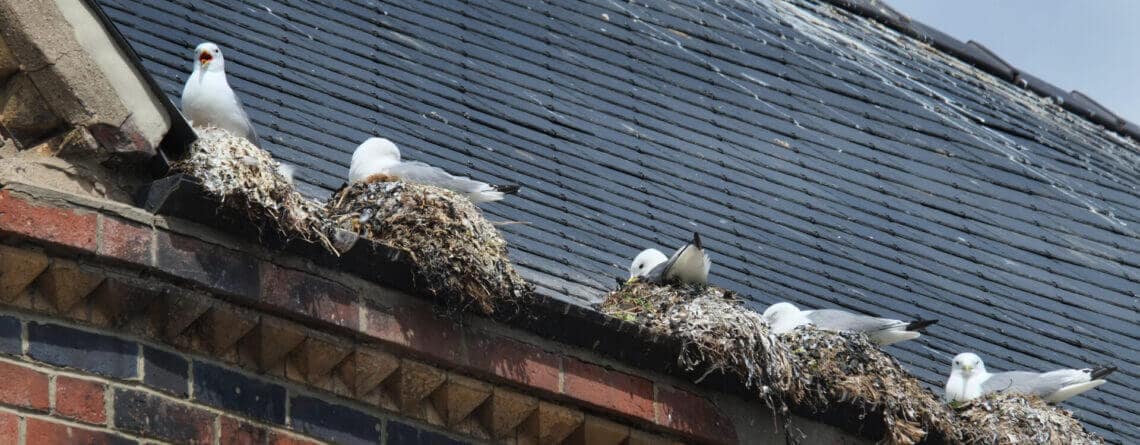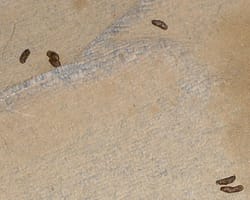Shredded paper and fabric can provide clues to mouse activity in your home. We will explore how these signs can indicate a mouse infestation and what you can do to address the problem.
Mice are notorious for tearing apart paper and fabric to create nests or foraging for food. Finding small shreds of paper or fabric in your home can be a clear indication that mice have been present. It’s important to address the issue promptly as mice can cause damage to your property and pose health risks.
By identifying and eliminating the source of the problem, you can ensure a mouse-free and healthy living environment. Keep reading to learn more about this common sign of mouse activity and effective solutions to prevent infestations.
Identifying Shredded Paper And Fabric
Discovering shredded paper and fabric can lead to insights into possible mouse activity in your home. These clues can help you identify the presence of mice and take necessary measures to address the issue promptly.
Signs Of Mouse Activity
Mice can be discreet creatures, often leaving behind subtle clues of their presence in your home. By understanding these signs, such as shredded paper and fabric, you can identify whether you have unwanted mouse activity. Let’s delve into the indicators and how they can provide valuable insights.
Shredded Paper As Mouse Clues
Mice are notorious chewers, and their fondness for paper makes it a common target in your home. Here are the key points to help you identify shredded paper as evidence of mouse activity:
- Piles of torn paper: Discovering small heaps of shredded paper is a strong indication of mice roaming around. Keep an eye out for these scattered piles.
- Nesting material: Mice use shredded paper to construct their nests, providing a warm and cozy environment for their young. If you find neatly gathered paper in hidden corners, it may signify an active mouse nest nearby.
- Ambitious culprits: Mice will go to great lengths to find paper, gnawing through important documents, books, or even tissue boxes. Be cautious if you spot such damage, as it could signify an extensive mouse presence.
Fabric Damage As A Hint
Aside from shredded paper, mice also target various fabrics within your home. Pay attention to the following details to determine whether fabric damage suggests mouse activity:
- Torn fabrics: Mice are resourceful in accessing fabric materials like clothes, curtains, or upholstery. When you notice random tears or small holes in these items, it’s likely a result of mouse nibbling.
- Traces of chewing: Examining fabric closely may reveal tiny gnaw marks. Mice often leave distinctive dental imprints on fabrics, helping you differentiate between their destructive tendencies and other causes of damage.
- Clues of nesting: Similar to paper, mice utilize fabric materials for their nests. If you stumble upon fabric remnants in compact, hidden areas, it could indicate a mouse nest in progress.
By understanding these indicators of mouse activity, specifically shredded paper and fabric damage, you’ll be better equipped to handle potential infestations. Keep a vigilant eye for these clues and take prompt action to address the issue effectively.
Understanding Mouse Behavior
Get insights into mouse behavior by paying attention to shredded paper and fabric in your home. These clues can help you identify their activity and take necessary measures to prevent further infestation.
Mice are notorious for causing mischief in our homes, and one common sign of their presence is shredded paper and fabric. But have you ever wondered why mice engage in such behavior? Understanding their behavior can help us identify their activity and implement effective control measures.
In this section, we will explore the reasons behind their inclination to shred paper and fabric and highlight the importance of identifying mouse activity.
Why Do Mice Shred Paper And Fabric?
Mice have several reasons for shredding paper and fabric in our homes. These include:
- Nesting material: Mice shred paper and fabric to build their nests. It provides them with warmth, comfort, and protection from predators. By tearing these materials into smaller pieces, mice can easily transport them to their nest.
- Food acquisition: Interestingly, mice also shred paper and fabric to search for food. They are highly resourceful creatures and often scavenge for leftover food particles or packaging materials that might have traces of food. Shredding paper or fabric helps them access these potential food sources.
- Marking territory: Mice have a strong territorial instinct and use scent marking as a way to claim their space. By shredding paper and fabric, they leave their scent behind, marking the area as their own.
The Importance Of Identifying Mouse Activity
Identifying mouse activity in your home is crucial for several reasons:
- Early prevention: By recognizing signs of mouse activity, you can take swift action to prevent a full-blown infestation. Prompt intervention can save you from the health hazards, property damage, and financial burden associated with a mouse problem.
- Health risks: Mice can carry various diseases and parasites that pose risks to human health, such as hantavirus and salmonellosis. Identifying their activity allows you to mitigate these health dangers and protect your family.
- Property damage: Mice have a penchant for chewing on various materials, including electrical wires, insulation, and furniture. Identifying their presence early can help prevent extensive damage to your home.
- Effective control measures: Once you determine that mice are present, you can take appropriate steps to get rid of them. Identifying their preferred nesting and feeding areas enables you to target these locations with traps or repellents more effectively.
Understanding the behavior of mice and being able to identify their activity are essential steps in managing potential infestations. By staying vigilant and recognizing the signs of mouse presence, you can address the issue promptly and safeguard your home and family.
Detecting Mouse Presence
Discovering mouse presence in your home can be determined through various clues such as shredded paper and fabric, indicating their activity. Keep an eye out for these signs to address the issue promptly and effectively.
Recognizing Shredded Paper And Fabric As Indicators
Shredded paper and fabric can provide crucial clues when it comes to detecting mouse activity in your home. These tiny terrors are notorious for leaving behind trails of destruction, but by recognizing the signs, you’ll be equipped to tackle the problem head-on.
Let’s explore how shredded materials can act as red flags for mouse infestations.
Common Areas For Finding Shredded Materials:
- Nesting sites: Mice love to create cozy nests in secluded areas. Keep an eye out for shredded paper and fabric in nooks, crannies, and corners.
- Storage spaces: Mice are resourceful creatures, often targeting storage areas such as attics, basements, and garages. Check boxes, drawers, and shelves for signs of shredded materials.
- Behind appliances: The unseen spaces behind appliances, like refrigerators and stoves, provide mice with ideal hiding spots. Examine these areas for any shredded paper or fabric.
Examining Fabric Damage For Mouse Clues:
Mice can wreak havoc on fabrics throughout your home, leaving behind more than just shredded materials. By examining fabric damage, you can gain insights into the presence of these unwanted pests.
Types Of Fabric Damage Caused By Mice:
- Chewed edges: Mouse bites often result in uneven or jagged edges on fabrics. Look for frayed or ragged edges on curtains, upholstery, or clothing.
- Holes and gnaw marks: Mice have a propensity for nibbling, which can lead to small holes or gnaw marks on fabrics. Inspect garments, linens, and soft furnishings for signs of these telltale indicators.
- Nesting materials: Mice utilize fabrics for their nests, so keep an eye out for strands of shredded fabric in hidden nooks or burrows.
Recognizing The Difference Between Mouse And Insect Damage:
Distinguishing between mouse damage and damage caused by insects can save you time and frustration. Take note of these key differences:
- Mouse damage: Mouse damage typically leaves behind larger holes, uneven edges, and evidence of nesting materials like shredded fabric.
- Insect damage: Insects, on the other hand, tend to create smaller, neatly shaped holes without any accompanying shredded materials.
Now that you have a better understanding of how shredded paper and fabric can serve as indicators of mouse activity, you’ll be able to take swift action to address any potential infestations. Regular inspections and timely intervention are essential in keeping your home mouse-free.
Remember, the earlier you detect the signs, the easier it is to prevent further damage. Stay vigilant and be proactive in protecting your home from these troublesome critters.
Prevention And Control Methods
Discover effective prevention and control methods for mouse activity in your home with shredded paper and fabric as valuable clues. Identify signs and take action confidently to keep your living space rodent-free.
Effective Ways To Deal With Mouse Infestation
To effectively deal with mouse infestation in your home, it is crucial to implement prevention and control methods. By taking proactive measures, you can minimize the chances of mice infesting your space and prevent any further damage. Here are some effective ways to deal with mouse infestation:
Sealing Entry Points:
- Inspect your home thoroughly to identify any gaps or openings that mice can use as entry points.
- Seal these entry points with caulk, steel wool, or other appropriate materials to prevent mice from gaining access.
Setting Up Traps And Bait Stations:
- Place snap traps or catch-and-release traps in areas where mouse activity has been observed.
- Bait the traps with mouse-friendly food such as peanut butter or cheese to attract them.
- Regularly check and empty the traps to maintain their effectiveness.
Using Repellents And Deterrents:
- Use natural repellents such as peppermint oil or cayenne pepper to deter mice from entering your home.
- Install ultrasonic devices that emit high-frequency sound waves, which mice find irritating and may deter them.
Proper Cleaning And Disposal Of Shredded Materials:
- Remove any shredded paper or fabric that you find in your home, as these are often signs of mouse activity.
- Wear gloves and use a vacuum or broom to clean up the shredded materials.
- Dispose of the materials in sealed plastic bags to prevent mice from being attracted back to the area.
Hygienic Steps To Take:
- Keep your home clean and free from food debris that might attract mice.
- Store food in airtight containers to prevent mice from accessing it.
- Regularly empty garbage bins and maintain good sanitation practices.
By implementing these prevention and control methods, you can effectively manage mouse infestations in your home. It is important to be prompt and thorough in your actions to prevent further damage and ensure the safety and cleanliness of your living space.
Professional Help And Next Steps
Discovering shredded paper and fabric in your home could be a sign of mouse activity. Get professional help to address the issue and learn about the next steps to ensure a mouse-free environment.
When To Seek Professional Assistance
If you’ve discovered signs of a mouse infestation in your home, it’s important to take immediate action. While some cases can be resolved with DIY methods, there are situations where professional help is necessary. Here are some indicators of a severe mouse infestation that may require expert intervention:
- Excessive droppings: If you find a significant amount of mouse droppings in various areas of your home, it might suggest a large population of mice.
- Strong odor: A pungent, musky smell in your home could be a sign of a severe mouse infestation.
- Gnaw marks: Mice have sharp teeth that they use to chew through various materials. If you spot extensive gnaw marks on furniture, wires, or walls, it’s an indicator of a serious problem.
- Visible nests: The discovery of mouse nests, made from shredded paper and fabric, is another sign of an established colony.
- Unusual pet behavior: If your pets seem overly interested in certain areas or display unusual behavior, it might indicate the presence of mice.
Finding A Reliable Pest Control Service
When it comes to hiring a pest control service to address a mouse infestation, it’s crucial to find a reliable and reputable provider. Here are some steps you can take to ensure you choose the right service:
- Research and read reviews: Look for local pest control companies online and read reviews from their previous customers. Pay attention to their ratings, feedback, and overall reputation.
- Seek recommendations: Ask family, friends, or neighbors for recommendations. Their personal experiences can provide valuable insights and help you make an informed decision.
- Verify licenses and certifications: Make sure the pest control service you choose has the necessary licenses and certifications to operate in your area. This ensures they have the required expertise and adhere to professional standards.
- Request a consultation: Contact multiple pest control companies and request an on-site consultation. This will give you an opportunity to discuss the issue, ask questions, and receive a detailed cost estimate.
- Compare prices and services: Take the time to compare prices and services offered by different providers. However, remember that the lowest price doesn’t always guarantee the best results.
Maintaining A Mouse-Free Environment
Once you’ve resolved the mouse infestation with professional assistance, it’s essential to implement preventive measures to maintain a mouse-free environment. Here are some steps you can take:
- Regular inspections and maintenance:
- Conduct regular inspections of your home to identify any potential entry points or signs of mouse activity.
- Seal any gaps or cracks in walls, foundations, windows, and doors, as mice can squeeze through even small openings.
- Repair any damaged screens or vents to prevent mice from gaining access.
- Implementation of preventive measures:
- Store food in airtight containers to eliminate potential food sources for mice.
- Keep your home clean and clutter-free, as mice are attracted to food crumbs and hiding spots.
- Dispose of garbage regularly and ensure it is stored in sealed containers.
- Trim vegetation and remove debris from the perimeter of your home to eliminate potential nesting areas for mice.
- Seek professional advice:
- Consult with your pest control service about ongoing prevention strategies and follow their recommendations.
- Consider installing mouse traps or using rodent deterrents in areas prone to mouse activity.
By following these steps, you can help prevent future mouse infestations and ensure a mouse-free environment in your home. Remember, early detection and proactive measures are key to keeping these unwanted pests at bay.

Credit: romneypestcontrol.com
Frequently Asked Questions Of Shredded Paper And Fabric: Clues To Mouse Activity In Your Home
Are Mice Attracted To Fabric?
Yes, mice are attracted to fabric due to its warmth, comfort, and potential for nesting.
How Do You Know If There Is A Mouse In Your House?
Signs of a mouse in your house include droppings, chewed wires, damaged food packaging, and scratchy noises.
Are Mice Attracted To Paper?
Yes, mice are attracted to paper due to its scent and the potential for it to be used as nesting material.
Do Mice Or Rats Rip Up Paper?
Yes, mice and rats have a tendency to rip up paper.
Conclusion
Finding shredded paper and fabric in your home can be a clear indication of mouse activity. These crafty critters often use these materials to build their nests and create cozy hiding spots. By spotting these telltale signs, you can take proactive measures to address the mouse problem in your home.
Preventing access to food sources, sealing entry points, and setting traps are effective methods to control mouse infestations. Regularly cleaning and organizing storage areas can also help discourage mice from nesting and foraging for food in your home. Remember, mice can reproduce rapidly and multiply in a short amount of time, so it’s crucial to address the issue as soon as possible.
By being aware of the signs and taking prompt action, you can protect your home and ensure a mouse-free environment for you and your family. Stay vigilant and keep an eye out for shredded paper and fabric, as they could be your first clue to a mouse infestation.



